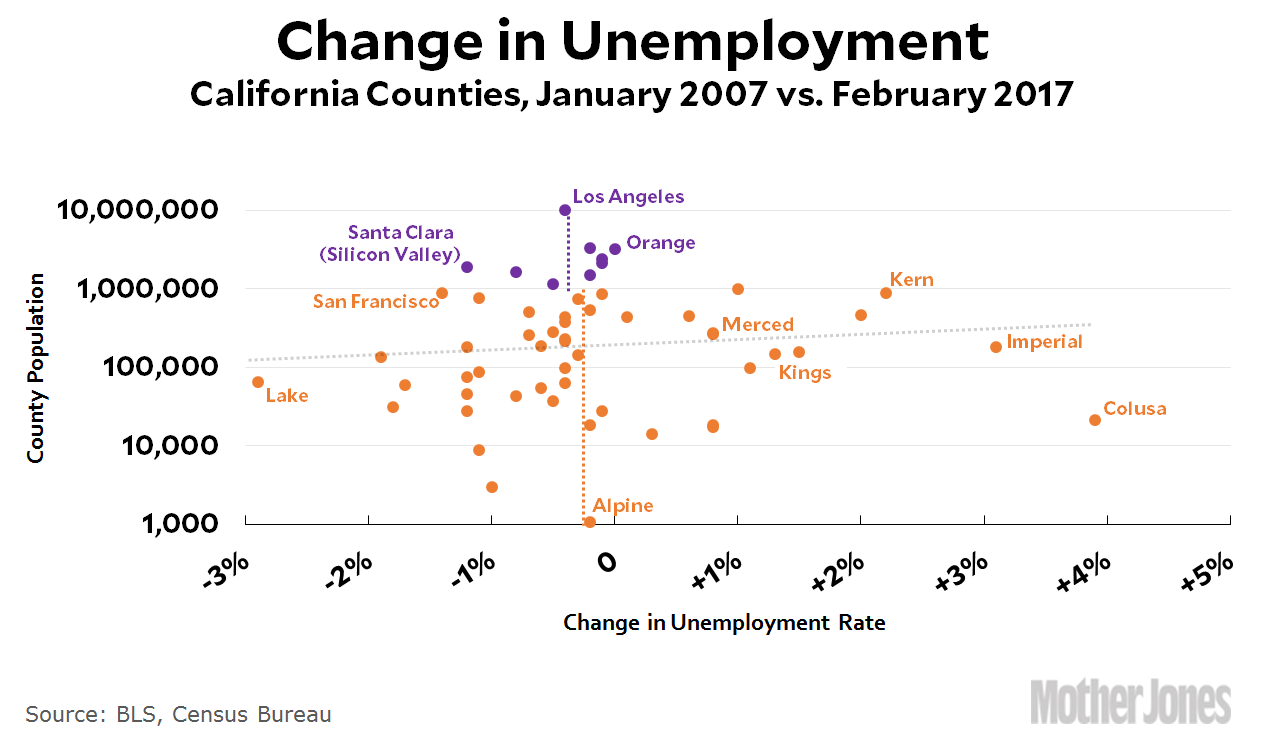Thomas Edsall writes that as we recovered from the Great Recession, big cities did pretty well but rural areas didn’t. “The fact that people living outside big cities were battered so acutely by the recession goes a long way toward explaining President Trump’s victory in the last election,” he says, which he illustrates with this chart:

I don’t think there’s much question that Edsall is right in general, but this particular chart seemed off somehow. It combines both population growth and employment rate in a confusing way, and it covers the whole country, so it doesn’t account for the way different states responded to the recession. I pondered for a while what I’d rather see, and decided to examine the unemployment rate in California counties. California has a good mix of big cities and rural counties, including a lot of farming counties that voted heavily for Trump, and every county benefited from identical state policies since they’re all in the same state. Here’s the chart, which compares unemployment at the peak of the last expansion to today:

There are four points I can make about this:
- If you draw an overall trend line (light gray line), it turns out that that unemployment declined a bit more in smaller counties than in larger counties.
- The big cities (purple) all fall into a very small cluster, showing declines between about -1 percent and 0. The smaller counties (orange) are scattered all over the place, from -3 percent all the way up to +4 percent.
- The average drop in unemployment is roughly the same in both big cities and the rest of the state. Big cities (-0.39 percent) did marginally better than everyone else (-0.25 percent).
- The main farming counties have done poorly. Their unemployment rate has increased by +1.0 percent.
This is just one state, and I’m not trying to pretend that this data offers anything conclusive. What’s more, Edsall has some other facts and figures to back up his point. Still, I’ll toss out two guesses:
- Big cities may have recovered better than rural areas, but only modestly. The difference isn’t huge, and by itself doesn’t really explain why Trump won.
- The large effect Edsall sees may be due to differing state responses to the recession. I suspect that rural red states shot themselves in the foot by adopting conservative policies (cut taxes, slash spending) that hurt their recovery. This may have been an especially big factor in the 2008-09 recession, since the federal government did less than usual to cushion the blow.
I don’t know if anyone with real econometric chops has tested my second guess. If I find anything, I’ll follow up.


















